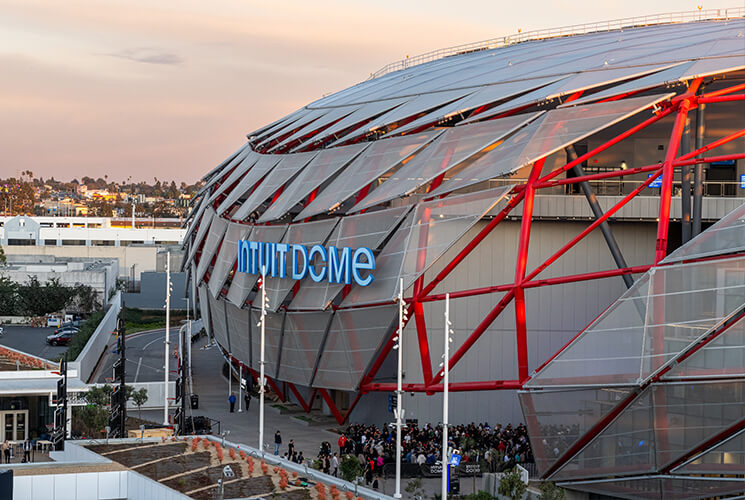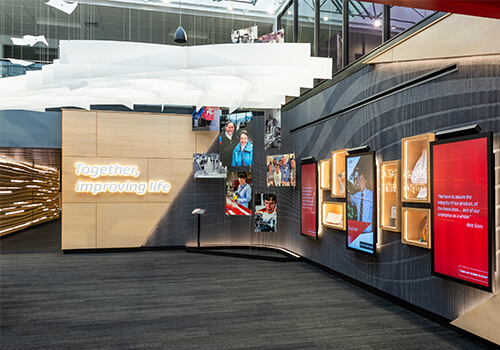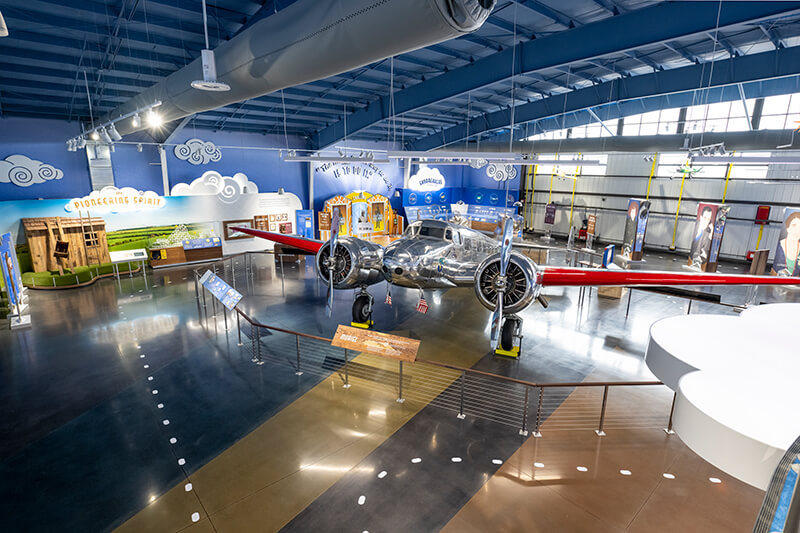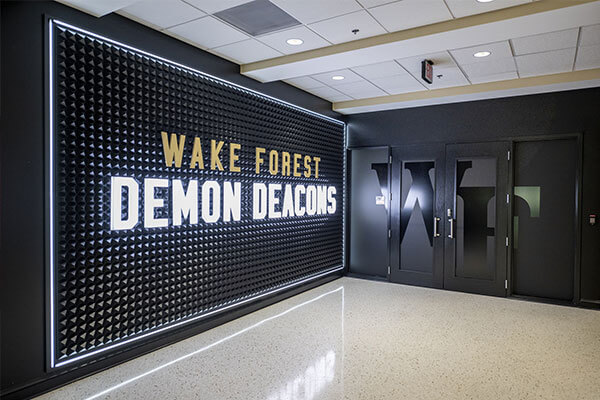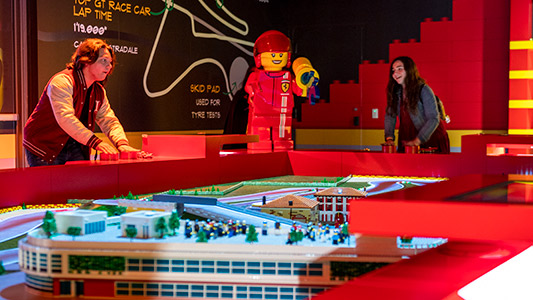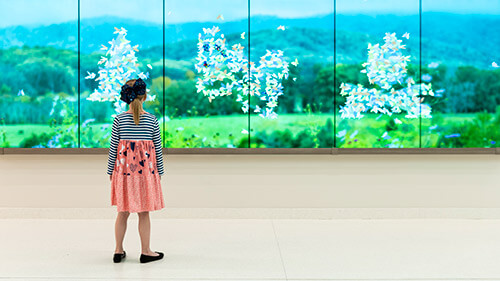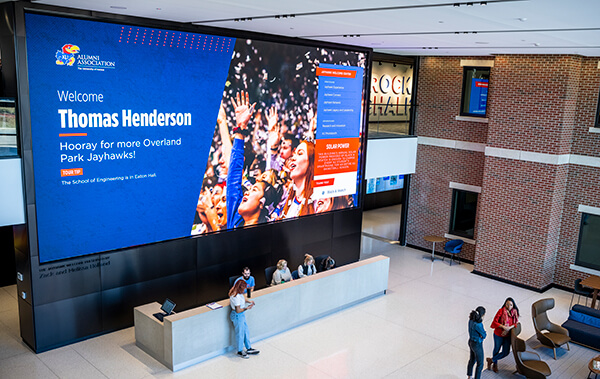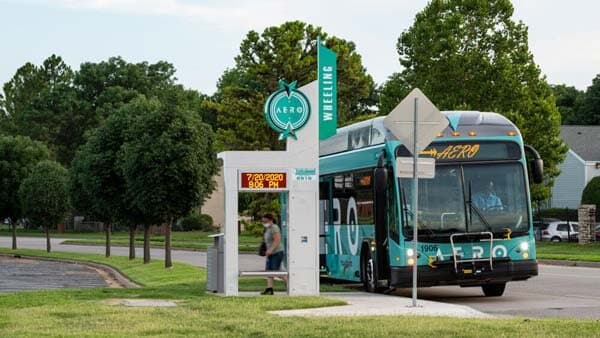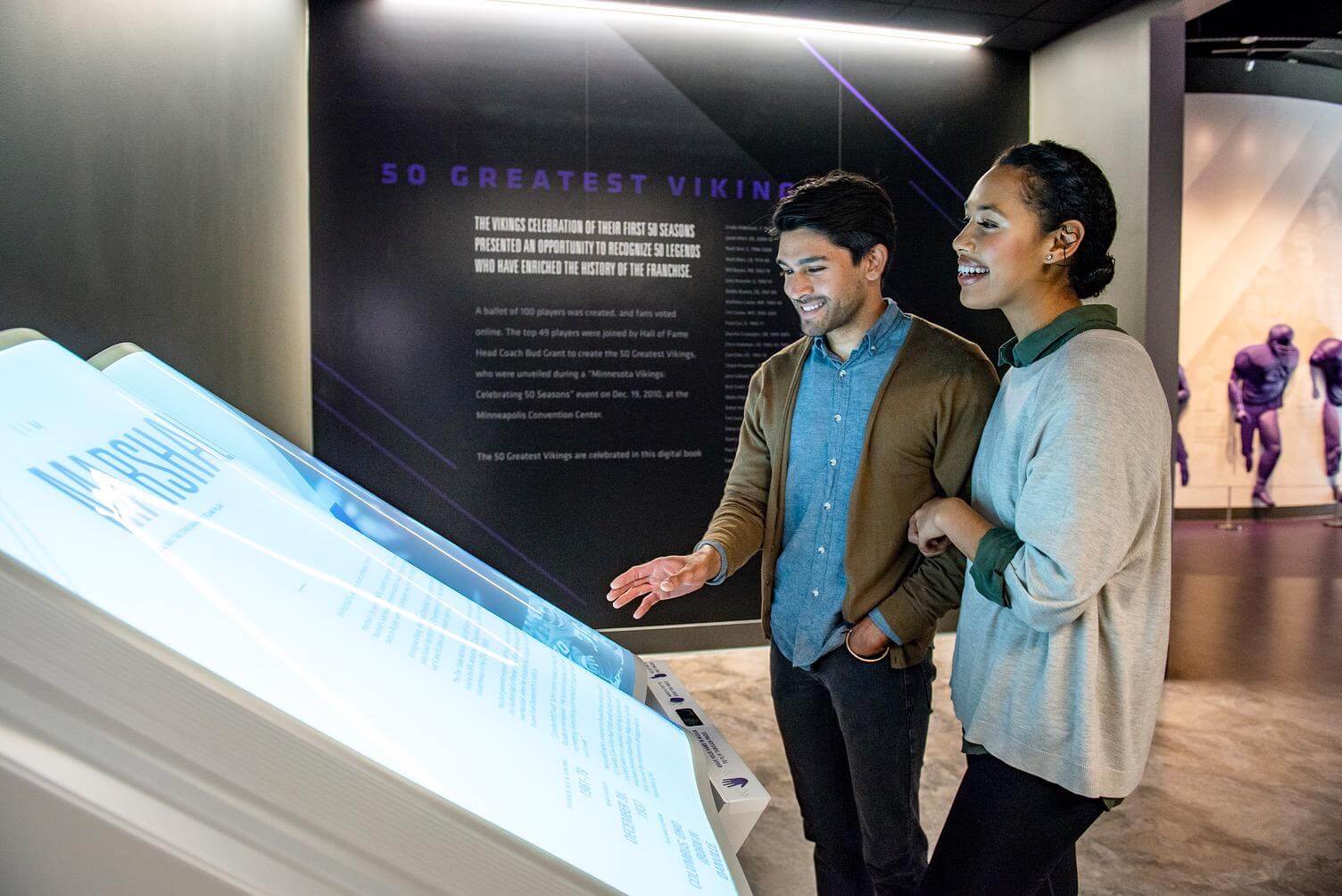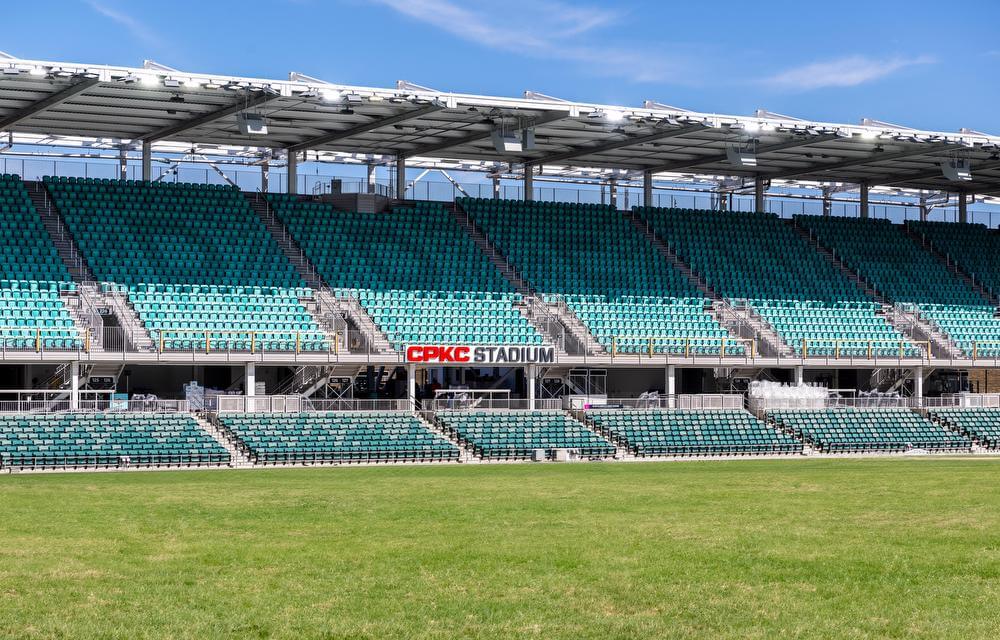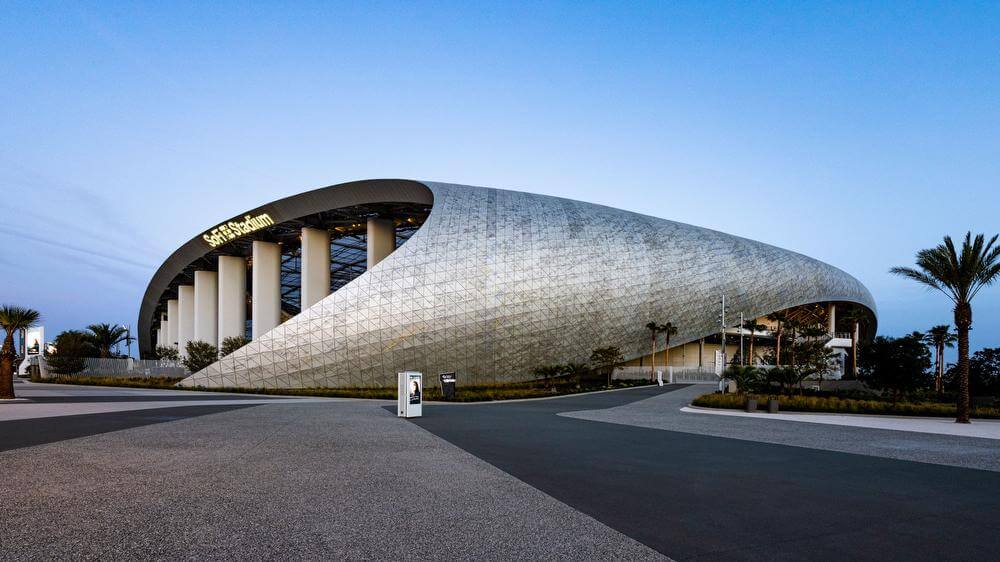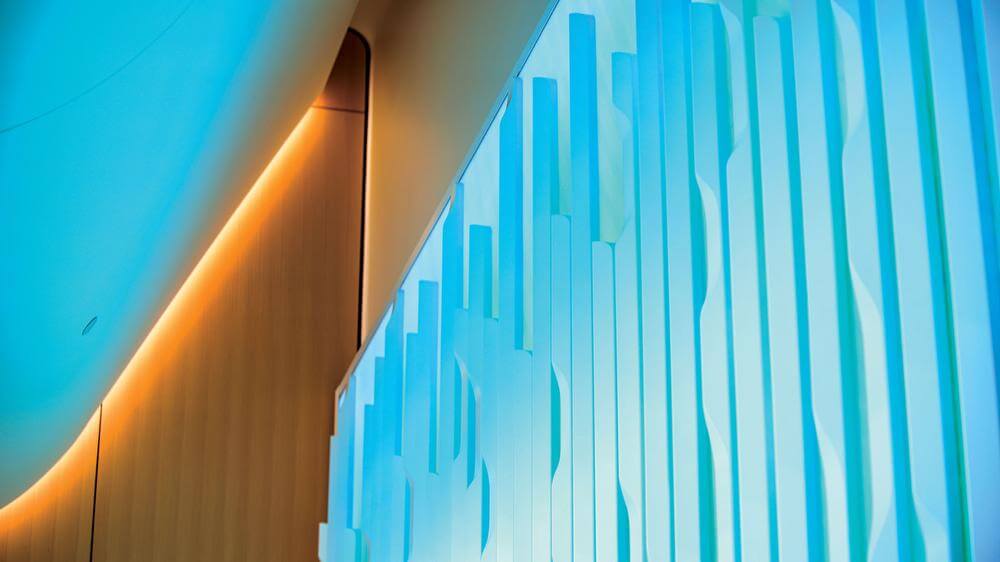Is it in a museum’s best interest to merge technology into physical space as a tool for engagement and non-traditional learning environments?
Museums and Technology have many inherent similarities—both could become just about anything, given the right vision, creativity, and application. Neither one requires the other to exist, but when they come together, entire worlds open up that were not there before, and Time and Space cease to be barriers to human expression and our understanding of our world.
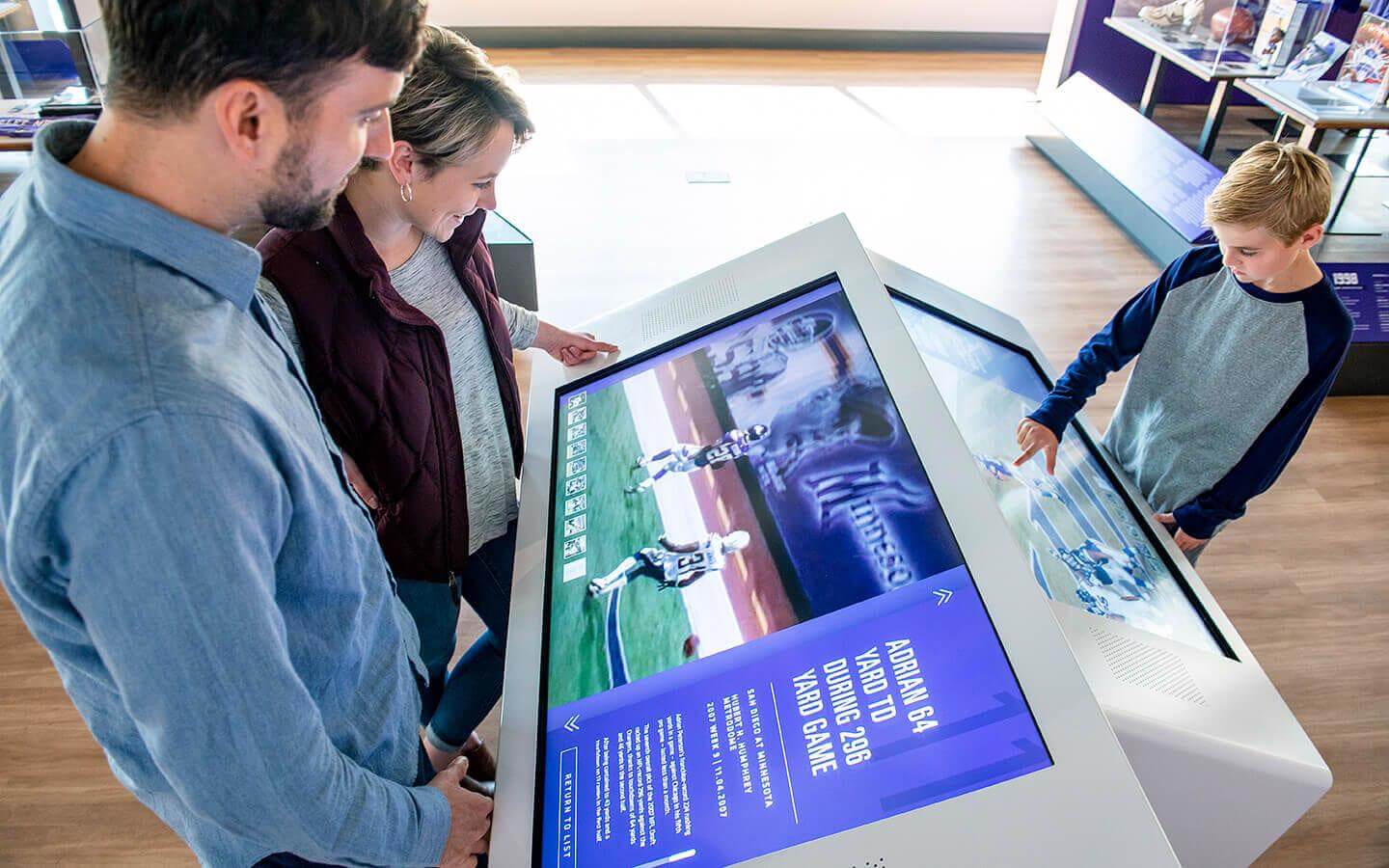
The Minnesota Vikings Museum is centered around storytelling, and combines physical artifacts and displays with moments of interactive technology that bring the stories to life through responsive audio and video. The challenge was appealing to a broad audience and ensuring sure a 10-year-old fan had just as much fun as his 70-year-old grandfather, reliving their own Vikings’ memories.
Technology has the power to transport us to distant places as well as the distant past or imagined future; yoked together with authentic storytelling, it has the unique power to put us squarely in the shoes of those who lived in other places and times. It can reveal the unseen universe in a single drop of water, and piece together the picture of the vast universe beyond our skies. Used wisely, technology begets creativity, imagination, and magic, which in turn inspires more of the same.
INTERGENERATIONAL EXPERIENCES
Leveraging technology in our educational spaces often presents a new challenge: a digital, double-edged sword. In using resources and platforms native to younger generations, we create experiences that feel natural to their daily interactions. In contrast, these same integrations can polarize senior visitor populations and deter them from engaging with unfamiliar digital tools.
In an effort to develop an exhibit with technology that caters to a variety of comfort levels, it’s imperative to synthesize a user language, or rather, a system by which we intuitively educate visitors on how to engage with our content. Simplified, this process can involve implementing tactics like instructional signage or tutorials to guide the viewer through the experience.
DYNAMIC AND MALLEABLE CONTENT
While artifacts may remain unchanged through the years, the lens and context in which we present that information often evolves based on new research or perspectives from those who curate and develop the experience. Technology allows us to create dynamic and malleable content that can be easily adjusted to meet the needs of our specific exhibit. Even a basic installation of digital information screens can prevent rework or re-installation (and its subsequent budget increases), should we want to change the way we discuss an artifact or idea.
In a research and development effort at Dimensional Innovations, our technology team sought to answer the question: how can we utilize mixed reality tactics to create 3-dimensional environments that both gamify the experience and educate the user?
Inspired by NASA’s Mars Rover launch scheduled for July 20th of this year, we developed a warehouse-scale software program for Facebook’s Virtual Reality headset, Oculus Quest. In simply putting on a headset, the gamified experience allows users space-walk on a new planet, repair a space station and learn information about the new launch. With NASA’s support, we utilized their database of real surface textures, mission audio recording and rover renderings to ensure the experience was as accurate as possible.
In terms of dynamic content, this specific type of experience lends itself well to adaptation. Over time, we can adjust the content and educational elements to address NASA’s new findings or information with simple software updates. In the meantime, the software is being packaged for free mass distribution and use, allowing any museum, school or individual with an Oculus headset to download the experience and explore Mars from their own space.
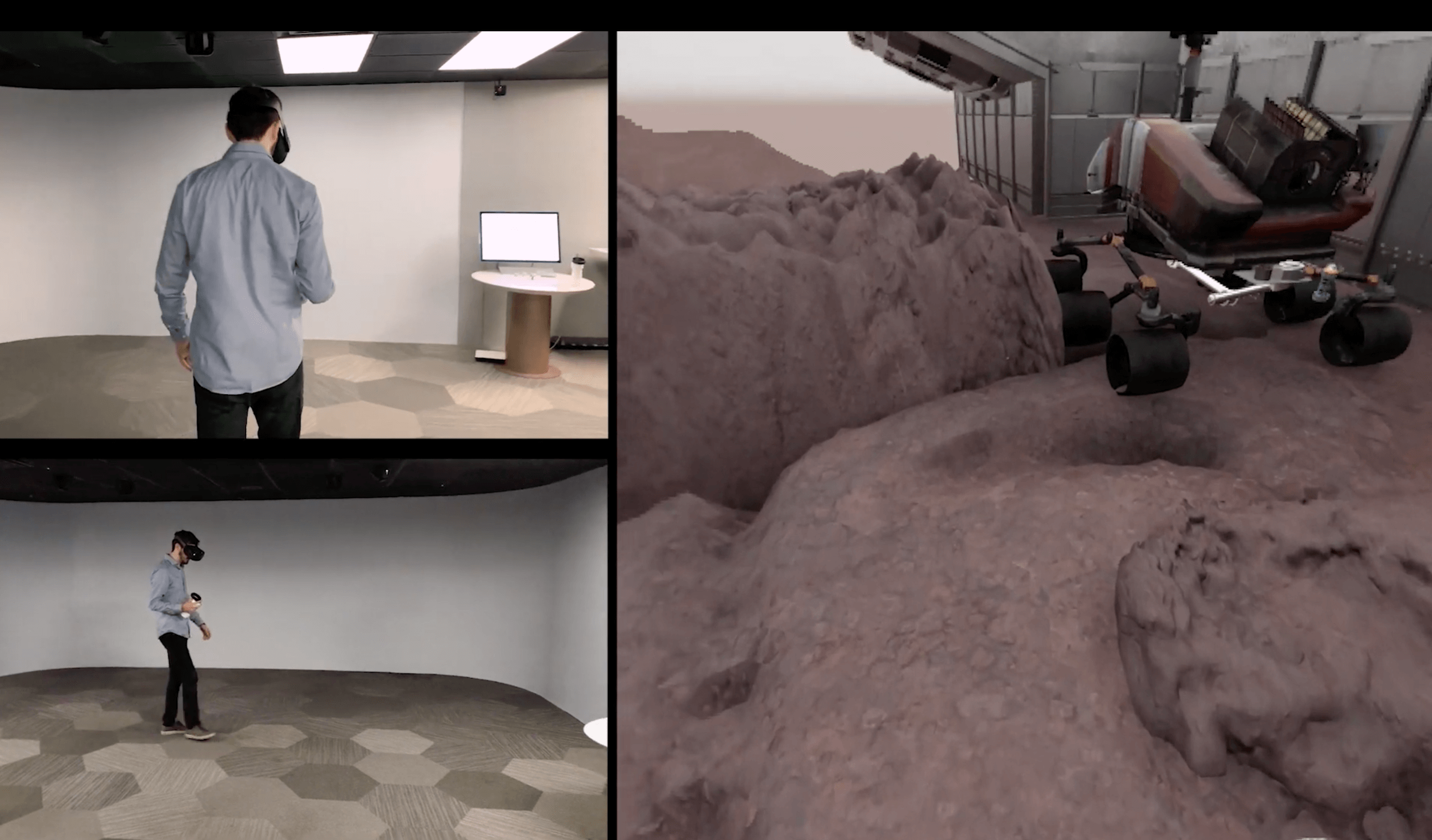
The Mars Rover Experience: Digital images from the VR experience showcasing the land rover, environment textures and process.
VIRTUAL EXTENSIONS
One of the greatest benefits to technology is its infinite reach, extending a visitor’s interactions with our content beyond the experience in our physical walls. The value of online or remote engagements have increased as a global pandemic heightened caution around in-person or large group experiences.
When we create digital extensions to our physical facilities—whether via personal device or mixed reality technology—we create opportunities to extend our interaction with visitors before and beyond their visit. Diversifying our offerings to include these solutions also is a means of promoting inclusivity, allowing individuals of all abilities to engage with and learn from our content.
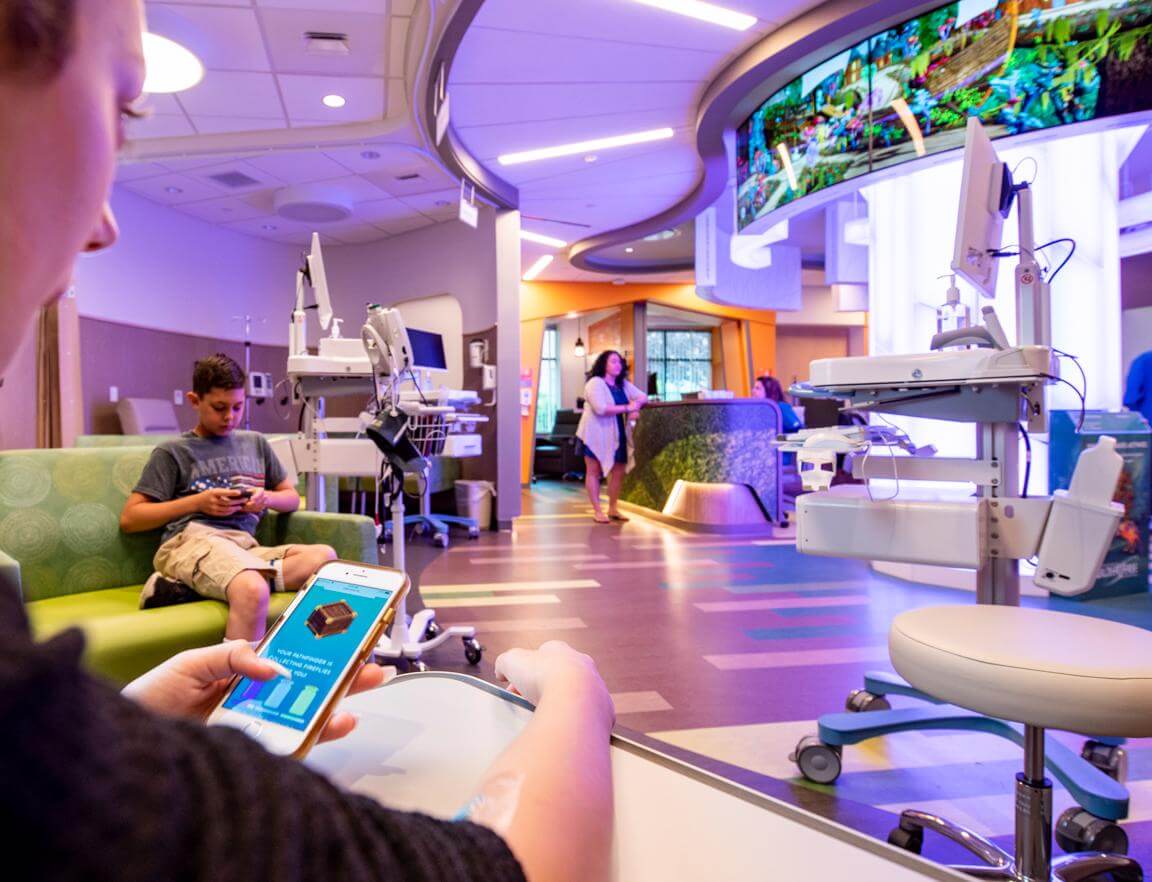
With hospitals putting an increased focus on facilitating welcoming and engaging experiences for patients and their families, incorporating technology beyond the procedure room and tying it to clinical outcomes has become key. DI was challenged by the Connecticut Children’s Medical Center to help bring their Infusion Room to life, and create a digital experience to compliment the renovated space.
We advocate only to use technology when it makes sense and adds to the story and experience. In some cases, no technology will remain the best technology. The intent in utilizing mixed-reality and digital resources should not be to cut people off from the real world, but rather to bring the real world to life through a new lens.
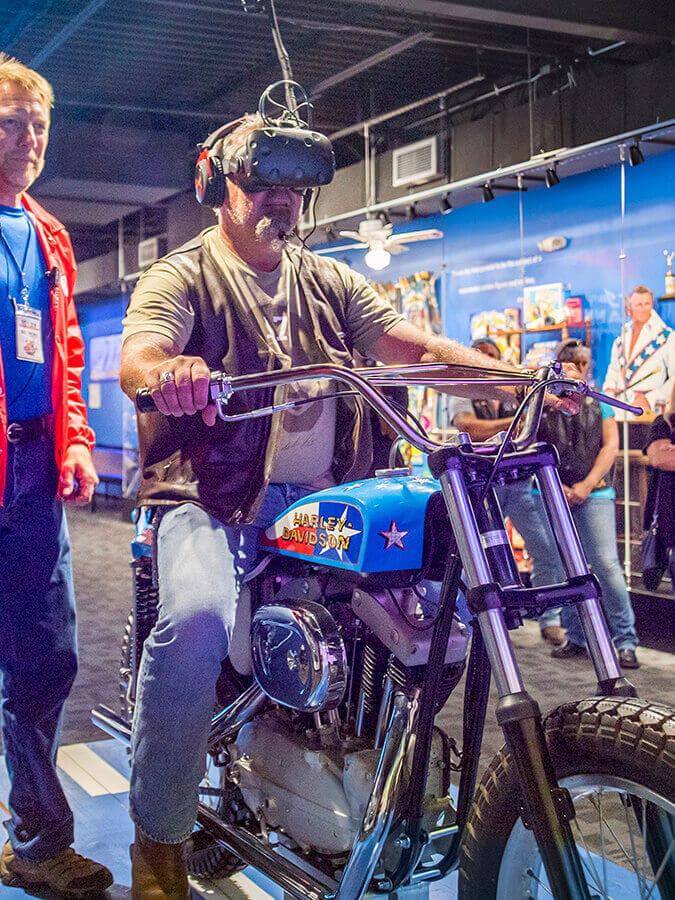
Evel Knievel Museum: With audiences actively seeking experiences that are own-able and authentic, companies are inherently held to a higher standard of storytelling. Mike Patterson, owner of the Historic Harley-Davidson Topeka dealership, enlisted the help of Dimensional Innovations for the design and build of this historic museum to create an “experience where people not only learned about Evel, but understood how he lived.”



